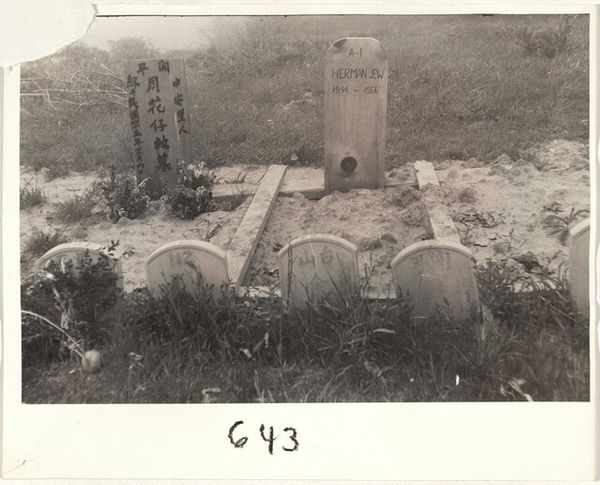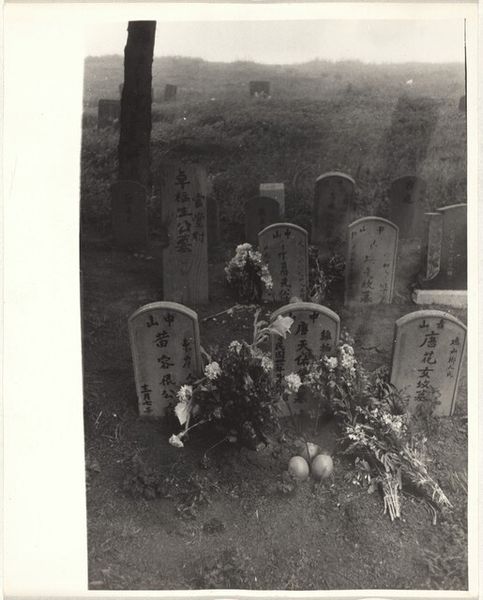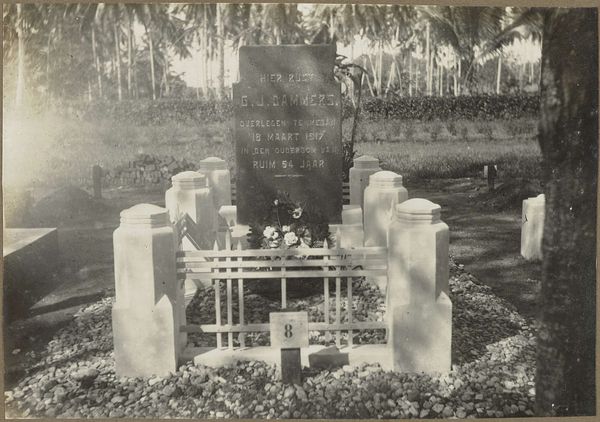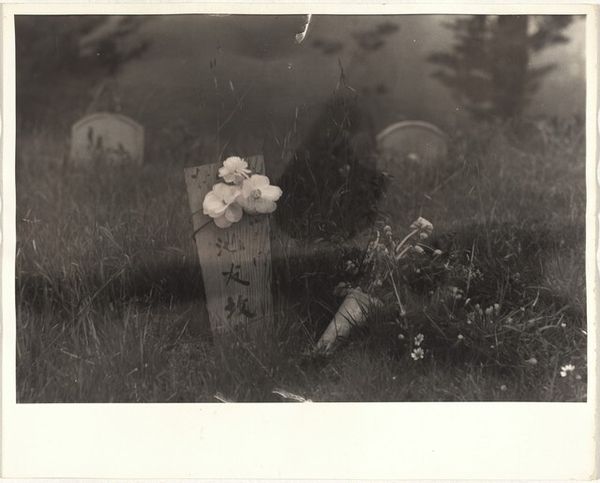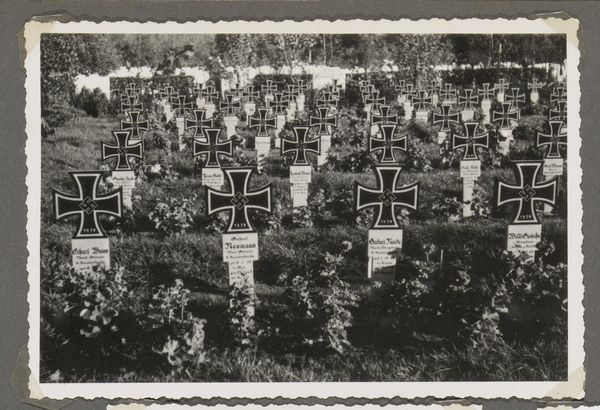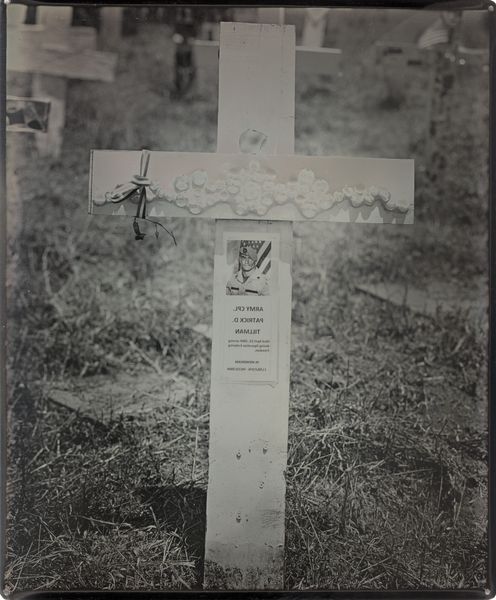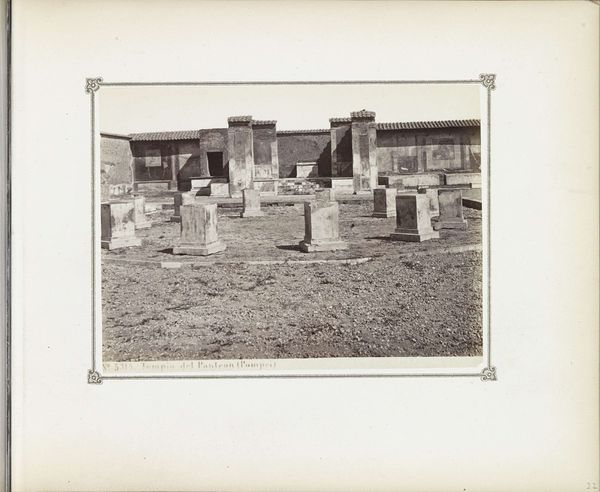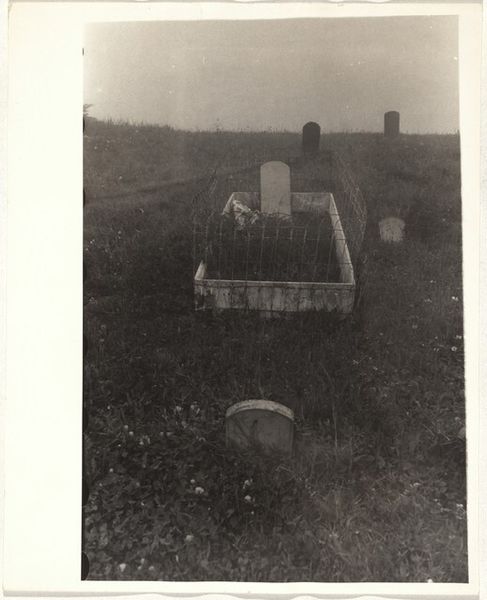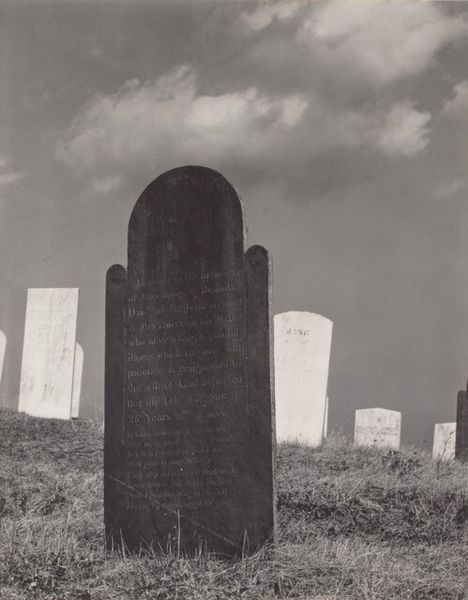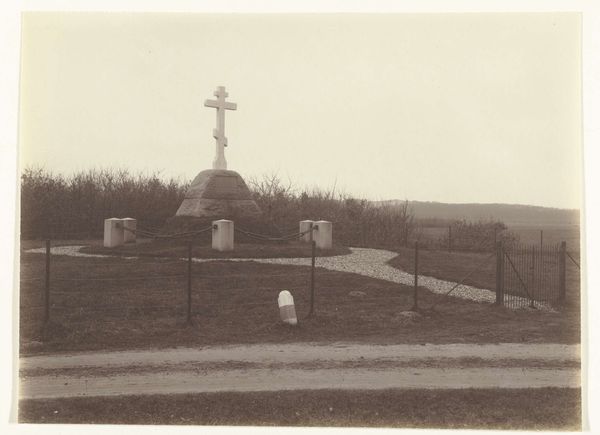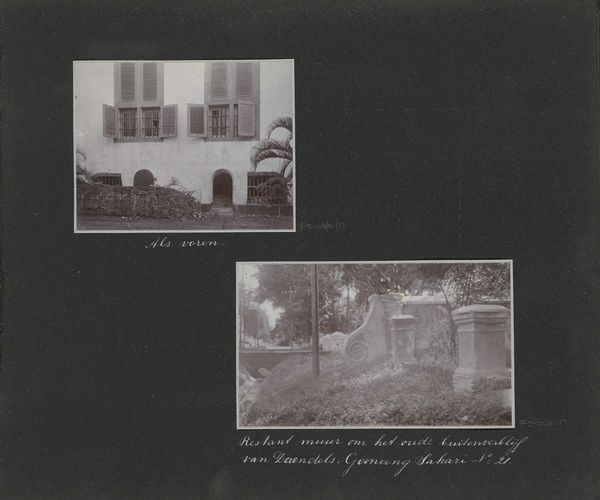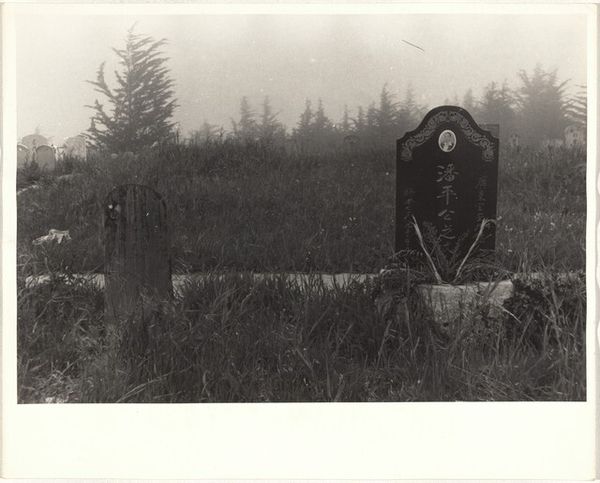
#
print photography
#
photo of handprinted image
#
pale palette
#
photo restoration
#
ink paper printed
# print
#
wedding photography
#
light coloured
#
colourisation
#
watercolor
#
shadow overcast
Dimensions: sheet: 25.2 x 20.2 cm (9 15/16 x 7 15/16 in.)
Copyright: National Gallery of Art: CC0 1.0
Curator: Robert Frank's "Cemetery--San Francisco," taken in 1956, presents us with a poignant scene in monochrome. What strikes you immediately about it? Editor: A palpable sense of quietude. The soft gradients of gray, the overcast light... it’s subdued, almost hushed. The "Reserved" sign in the foreground is a bleak compositional anchor, juxtaposed against the ornate gravestones in the distance. Curator: Frank often explored societal undercurrents. The cemetery, particularly one in a city as dynamic as San Francisco, provides fertile ground for such examination. The photograph itself possesses a formal rigor. Note how Frank uses the limited depth of field to guide the viewer's eye—blurring the background to keep the "Reserved" sign in sharp focus. Semiotically, that small detail becomes quite charged, doesn’t it? Editor: It does. The mid-1950s in America saw burgeoning consumerism paired with the Cold War anxieties. Is this photo then about anxieties around social mobility, death, or perhaps even the exclusivity of the American Dream? The cemetery, historically, became an interesting landscape reflecting community structures and the values held by different social strata. Curator: Precisely. The choice of a cemetery with, notably, Chinese gravestones complicates the narrative further, acknowledging the marginalized communities often overlooked in the mainstream representation of America at that time. Visually, the repetition of vertical elements—the grass, the wooden sign, the tombstones themselves—create a rhythmic structure that feels both grounded and unsettling. Editor: Right, the picture is fraught with class consciousness, or perhaps an underbelly that reflected a segment of American society and a community. What do you suppose he aims to achieve by incorporating such blunt political discourse, particularly at the apex of so much unrest during this time? Curator: Frank rarely provides definitive answers. The picture creates discourse and opens many more interpretations by emphasizing form and social messaging. Editor: Frank compels us to think critically about what is being “reserved” or not accessible within American society. Curator: The artistry lies in the capacity of a simple composition to provoke introspection regarding life, death, and the silent, often overlooked narratives that exist within any community. Editor: Absolutely. A stark reminder that even in the landscape of eternal rest, societal dynamics persist.
Comments
No comments
Be the first to comment and join the conversation on the ultimate creative platform.
